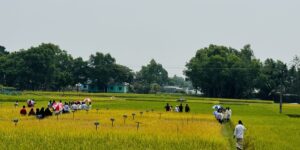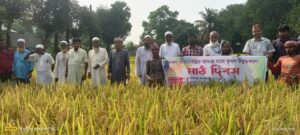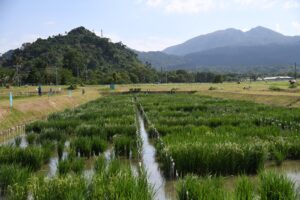The International Rice Research Institute (IRRI) is now embarking on an unprecedented overhaul of its breeding agenda to achieve two things: increase the adoption of its improved varieties and be more efficient with resources.
What steers the wheel?
Creating a new rice variety typically takes around 10 years, or even more, before it reaches farmers’ fields. Because many of these breeding undertakings are still research or supply driven, what farmers really need and when they need it is an important factor that often gets lost along the way.
“Public breeding, which is what describes IRRI’s, is often supply driven, yet we hope that our varieties get adopted and create an impact,” said Eero Nissilä, head of IRRI’s Plant Breeding, Genetics, and Biotechnology Division.
Dr. Nissilä, along with some donors and partners, thinks there is a better way to tap IRRI’s breeding experience and structure.
“Improving crops is an incremental process; in other words, each breeding cycle produces new lines that are better than the previous ones,” said Dr. Nissilä. The genetic gains, compounded over time, have a great impact on crop productivity, he explained.
“Increasing the genetic gains of public breeding from 0.5–0.8% to 2% or higher—a level that private breeding of temperate cereals has achieved—will result in more than a 35% yield difference over 20 years,” he said. “We are taking lessons from private breeding—where the products are demand driven.
“We are not sacrificing the values of IRRI’s previous breeding pipelines,” Dr. Nissilä added. “We’ll keep on with where we have been strong—and that is our trait development. It is varietal development that takes a lot of time, and where improvements can be made.”
On its way to creating a demand-driven agenda, the Institute starts with these important steps: streamline the breeding and management processes, regionalize breeding material development and trials, make use of cuttingedge technologies, and use market research to guide breeding targets and priorities.
Efficiency now
Many public breeding programs around the world are often carried out in small groups; most of them conduct their various breeding activities on their own. But, the new approach envisions centralized and cross-cutting processes that will provide services to all breeding pipelines. This will allow the use of expertise in a single, effective process. And, it will be cost-effective because it will prevent overlapping and duplication of work. In this way,resources can focus on state-of-the-art facilities that will make the work more efficient.
The priorities in the streamlining of functions and resources are delivery and maintenance of a high-quality database of breeding information, which allows greater exploitation of plant breeding data, as well as maintaining an unabated flow of genetic traits crossed into elite germplasm through continuing prebreeding activities.
Going regional
Since the 1960s, IRRI has developed its breeding lines and conducted trials at its Philippine headquarters. Undoubtedly, this system has produced several mega-varieties that farmers worldwide are now planting.However, these breeding activities need to be decentralized to target market regions.
Now, two breeding hubs have been established in South Asia and East and Southern Africa. These hubs serve as breeding pipelines, which will help IRRI focus its breeding work to match regional and local market needs.
Letting the market talk
Another important aspect in the new breeding approach is to understand market demand.
“The rice markets in Asia and East and Southern Africa have been evolving,” said IRRI scientist Alice Laborte. “Food value chains have been transforming and rice market segments have become more diverse. We need to adapt to these changes, and the way to do it is to listen to what the market needs, and respond accordingly.”
Taking the lessons of the market to the breeding drawing board is not going to be easy because preference for rice traits varies by regions. For instance, consumers in East Asia such as Japan and South Korea prefer rice with short and bold grains, while those in South Asia such as India and Bangladesh prefer long and slender grains.
Even within a geographic location, preferences for certain traits may also vary by gender, urban-rural markets, and socioeconomic class, explained Dr. Laborte. “Rigorous surveys will be conducted to determine the traits preferred by rice farmers, consumers, and other value-chain actors across the target regions,” said Dr. Laborte.
“We will look into the geographic and demographic segmentation of rice environments to help identify priority traits in target regions.”
Change is here
“Change has already started at IRRI,” said Dr. Nissilä. “We introduce changes in our setup and system every cropping season, and we move forward quite fast now.”
Dr. Nissilä explained that, before the wet season of 2013 starts, the newly restructured breeding pipelines of IRRI will also use a more efficient model by changing the breeding methodology.
Taking time to reflect on its people—the “life blood” of IRRI’s breeding, Dr. Nissilä said: “IRRI’s Plant Breeding, Genetics, and Biotechnology Division is world-class and its breeders and staff make it so. They know by heart the magnitude of the work we do, and so they understand the changes that need to happen to make their work reach new heights.”
___________________
Liz Baroña-Edra is a science communication specialist with IRRI’s Communication Unit.








